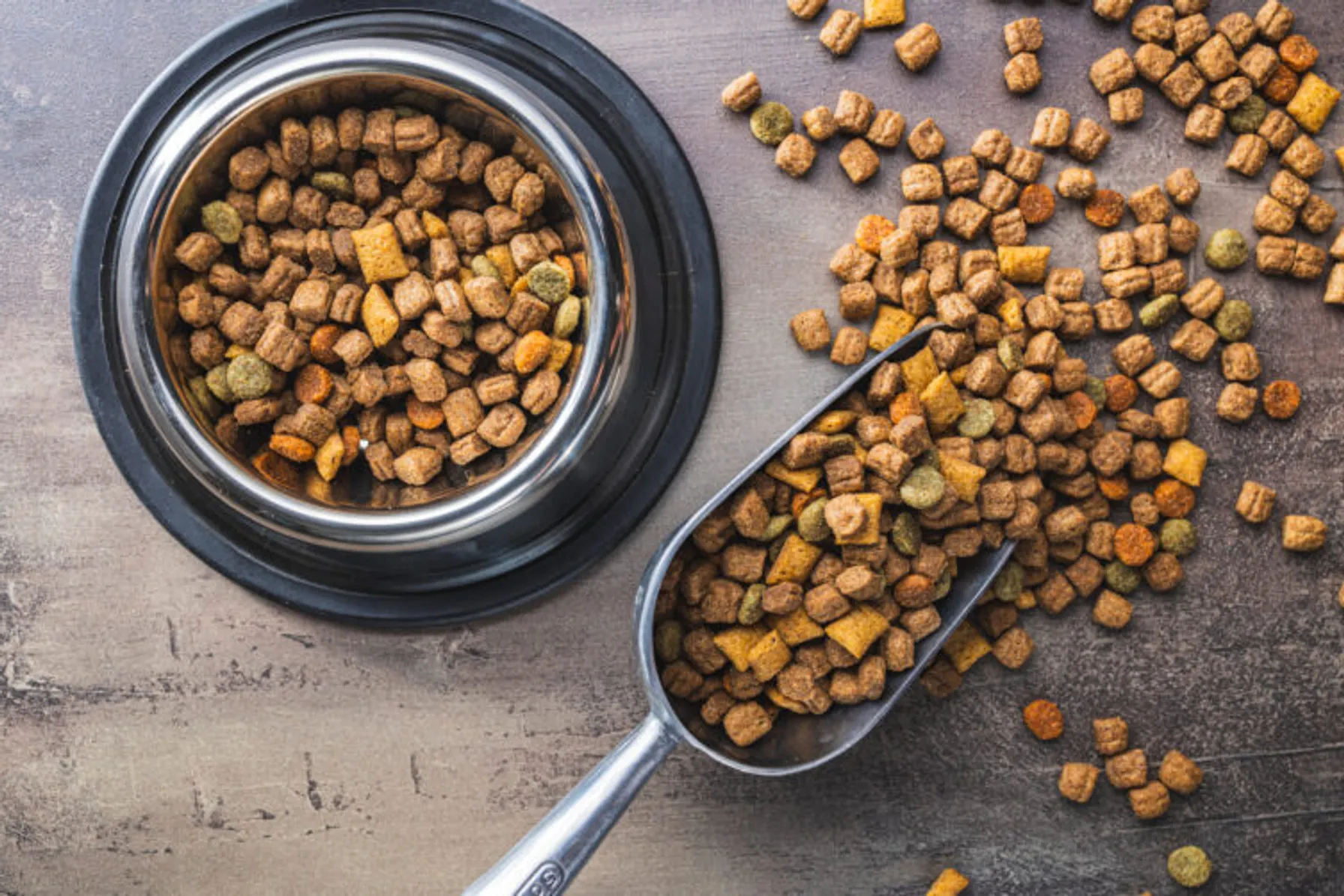Pet owners are increasingly focused on ensuring their companions maintain a nutritious diet. The intersection of nutrition, food quality and well-being has become a pivotal concern. It has been reported that the market for high end dog foods could triple in less than ten years.
For those who understand the foods industry, it is not surprising that cat, dog or other pet foods, like any product, can fall victim to various types of contamination. This may include a spectrum of agents; both chemical and biological.
There are a myriad of current allegations and dozens more will follow. Scientific rebuttal requires a thorough understanding of toxicology and the application of a health risk assessment
Related Services

Common Contaminants of Concern
The use of genetically modified (GM) ingredients in pet food, particularly in kibble, has raised concerns about the potential exposure to pesticides and herbicides (Wall 2017). Corn, soy, canola and alfalfa are often grown using GM ingredients, and non-GMO crops like oats, wheat and legumes may also be treated with glyphosate as a desiccant before harvest (Stebbins 2018). This has led to the detection of glyphosate and Bt toxins in pet foods, with kibble showing significantly higher levels than raw, canned or freeze-dried options (Nutt 2018; Becker 2023).
Glyphosate, the active ingredient in Roundup®, has become a focal point due to its extensive use and wide range of alleged health risks to humans and pets (de Morais Valentim et al. 2024). There are reports of weak associations between glyphosate consumption and diseases, including cancer, liver and kidney damage, gastrointestinal issues and endocrine disruption (de Morais Valentim et al. 2024). Its high thermal stability ensures that it is not degraded during cooking, food processing, or washing, allowing it to persist in plant ingredients and survive the manufacturing process of dog foods and other products.
Recent Litigation
Litigation involving pet food, or the grains, rice and meats used to make pet food, has become increasingly important to the industry (Frankel 2024). Allegations have been made regarding pesticides, metals, chemicals (including preservatives), bacteria and other substances (Zafalon et al. 2021; U.S. Food and Drug Administration (FDA) 2023). In recent years, several mass torts have been filed regarding pet food contamination (Hardee and Jones 2021; Grzincic 2022). A proper risk assessment, which correctly characterizes these contaminants, their concentrations and the potential impact on a pet’s health is essential for regulators, the courts and owners to make well-informed choices.
The U.S. Food and Drug Administration (FDA) serves as the primary regulator, overseeing pet food in accordance with the Federal Food, Drug and Cosmetic Act. To ensure the protection of pets from harmful substances, regulatory bodies set forth criteria for the ingredients used in pet food and monitor these products. Recently, pet food ingredients must meet standards that are often on par with those for human food (AAFCO 2023; Pet Food Institute 2024).
In 2021, a large class action lawsuit was brought against Midwestern Pet Foods Inc. for contamination of pet foods with salmonella and aflatoxin (MWPF Settlement 2024). The lawsuit was settled in 2023 with a $6.4 million class settlement (Steinberg 2023). Additionally, multiple producers like Big Heart Pet Brands Inc. and Evanger’s were identified by the FDA as having pentobarbital in their foods, potentially due to the use of euthanized animals as a source of meat (Entis 2017; Hanson 2018). This led to an FDA recall of several pet foods and related lawsuits followed in 2017 and 2018 (Entis 2018).

Overcome Legal Challenges with Risk Assessments: TRC Can Help
Litigation related to dog food contamination encompasses a range of legal challenges initiated by pet owners, consumer advocates and government bodies against pet food producers. These legal actions not only seek compensation for damages, including veterinary expenses and emotional distress, but also holds manufacturers accountable for product safety. Regulatory agencies like the FDA and EPA seek violations of food safety regulations, resulting in fines, recalls and necessitating better manufacturing practices.
To make informed decisions in each of these instances, a proper risk assessment is essential. Our team of scientists are exceptionally qualified to serve as experts in litigation involving health effects related to allegedly contaminated pet foods. We have over 35 years of experience with risk assessment, toxicology and industrial hygiene, positioning us as experts in evaluating chemical exposures and their health effects.
Reference
AAFCO. 2023. Guidelines for “Human Grade” Pet and Specialty Pet Food Claims. The Association of American Feed Control Officials.
Becker KS. 2023. The Carcinogen Hiding in Your Pet’s Food. Bark & Whiskers.
de Morais Valentim JMB, Coradi C, Viana NP, Fagundes TR, Micheletti PL, Gaboardi SC, et al. 2024. Glysophate as a Food Contaminant: Main Sources, Detection Levels, and Implications for Human and Public Health. Foods. 13(11): 1-27.
Entis P. 2017. Evanger’s blames supplier, FDA, for Pentobartital in dog food. Food Safety News. (February 22, 2017).
Entis P. 2018. FDA investigates Smucker-owned Big Heart over pentobarbital. Food Safety News. (July 16, 2018).
Frankel A. 2024. Pet food buyers get backing from 22 states in US Supreme Court venue fight. Reuters. (August 13, 2024).
Grzincic B. 2022. ‘Biologically appropriate’ dogfood label mere puffery, says court. Reuters. (February 15, 2022).
Hanson H. 2018. FDA Warns Of Possible Euthanasia Drug In Major Dog Food Brands. Huffington Post. (February 17, 2018).
Hardee K, Jones K. 2021. Trends emerging in pet food labeling lawsuits. Pet Food Processing. (January 5, 2021).
MWPF Settlement. 2024. Midwestern Pet Foods Marketing, Sales Practices and Product Liability Litigation Settlement. Midwestern Pet Foods Settlement. (October 7, 2024).
Nutt D. 2018. Study finds glysophate in cat and dog food. Cornell Chronicle. (October 1, 2018).
Pet Food Institute. 2024. How Pet Food is Regulated. Pet Food Institute.
Stebbins BR. 2018. Pre-Harvest Glysophate Timing in Oats and Final Oat Quality. North Dakota State University of Agriculture and Applied Science.
Steinberg J. 2023. Midwestern Pet Foods’ $4.6 Million Class Settlement Finalized. Bloomberg Law. (August 23, 2023).
U.S. Food and Drug Administration (FDA). 2023. FDA and CDC Investigate Cases of Salmonella Linked to Pet Food Made by Mid America Pet Food; Multiple Brands Recalled. U.S. Food and Drug Administration. November 9, 2023.
Wall T. 2017. GMO pet foods may be safe, but are rejected by pet owners. Pet Food Industry. (July 18, 2017).
Zafalon RVA, Pedreira RS, Vendramini THA, Rentas MF, Pedrinello V, Rodrigues RBA, et al. 2021. Toxic element levels in ingredients and commercial pet foods. Scientific Reports. 11: 1-19.





